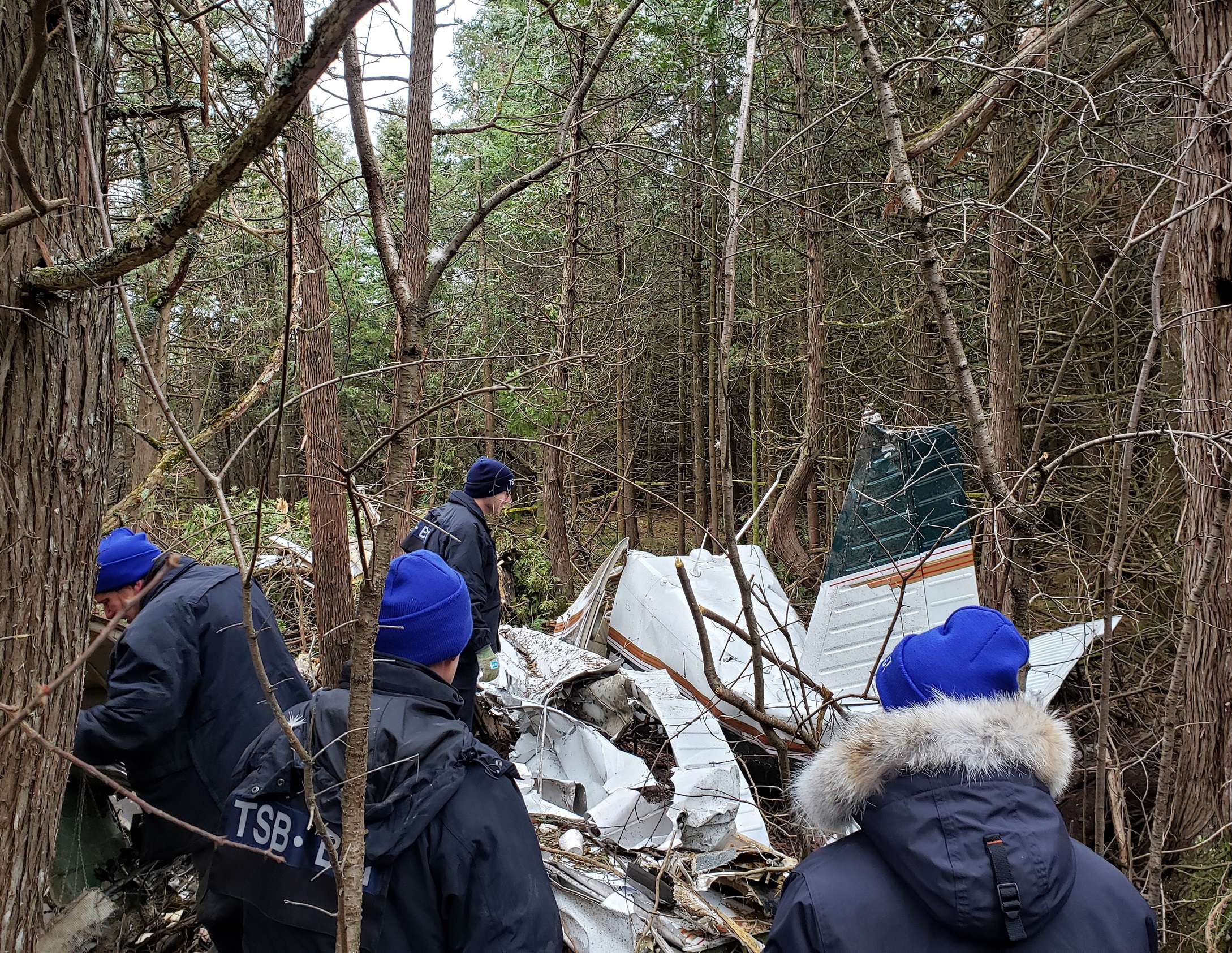Loss of control and collision with terrain
Privately registered
Piper PA-32-260, N50DK
Kingston Airport, Ontario, 3.5 NM N
The occurrence
On , at 1601 Eastern Standard Time, a privately registered Piper PA-32-260 aircraft (United States registration N50DK, serial number 32-29) departed Toronto/Buttonville Municipal Airport, Ontario, destined for Québec/Neuville Airport, Quebec. The pilot and 6 passengers were on board. The aircraft was operating under visual flight rules and departed during daylight hours. However, the majority of the planned flight was to take place during the hours of darkness, as official night began an hour after departure. During the flight, in response to deteriorating weather, the pilot made a number of altitude and track deviations. As the aircraft neared Kingston Airport, Ontario, the pilot made radio contact with NAV CANADA’s Kingston flight service station, stating his intention to land there. At 1705, the aircraft struck terrain approximately 3.5 nautical miles north of Kingston Airport. All 7 occupants were fatally injured. The aircraft was destroyed. There was no post-impact fire.
Media materials
News release
Fatal 2019 accident highlights risk of night flying with inadequate visual references to the surface
Read the news release
Deployment notice
TSB will deploy a team to Kingston, Ontario, following an aircraft accident
Richmond Hiill, Ontario, 27 November 2019 – The Transportation Safety Board of Canada (TSB) will deploy a team of investigators tomorrow morning to Kingston, Ontario, following an accident involving a Piper PA-32. The TSB will gather information and assess the occurrence.
Investigation information
Download high-resolution photos from the TSB Flickr page.
Class of investigation
This is a class 3 investigation. These investigations analyze a small number of safety issues, and may result in recommendations. Class 3 investigations are generally completed within 450 days. For more information, see the Policy on Occurrence Classification.
TSB investigation process
There are 3 phases to a TSB investigation
- Field phase: a team of investigators examines the occurrence site and wreckage, interviews witnesses and collects pertinent information.
- Examination and analysis phase: the TSB reviews pertinent records, tests components of the wreckage in the lab, determines the sequence of events and identifies safety deficiencies. When safety deficiencies are suspected or confirmed, the TSB advises the appropriate authority without waiting until publication of the final report.
- Report phase: a confidential draft report is approved by the Board and sent to persons and corporations who are directly concerned by the report. They then have the opportunity to dispute or correct information they believe to be incorrect. The Board considers all representations before approving the final report, which is subsequently released to the public.
For more information, see our Investigation process page.
The TSB is an independent agency that investigates air, marine, pipeline, and rail transportation occurrences. Its sole aim is the advancement of transportation safety. It is not the function of the Board to assign fault or determine civil or criminal liability.

